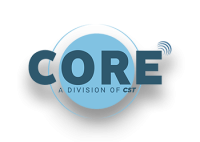As the use of mobile wireless devices has become nearly ubiquitous across all generations living and working in all parts of the country, indoor wireless service is no longer a luxury, but rather an absolute requirement. Commonly known as the “4th utility,” indoor cellular service is a must-have for employees, customers, tenants, students, security personnel and first responders.
Due to the incredible proliferation of mobile phones over the last decade, businesses and homeowners alike are choosing to eliminate expensive landline phone systems. Approximately 97% of Americans now own a cellphone, and 80-90% of all cellular calls are made indoors. Even more critically, approximately 80% of all 911 emergency calls are made from cell phones. Business calls, mobile data connections, social media, video conferences and emergency service requests must be seamless, whether outside or indoors. The demand for mobile connectivity in the workplace has also boomed as more companies have started using cloud-based applications and messaging apps for communication, which has increased the demand from occupants for better connectivity.


Tenants and guests have become far more sensitive to connectivity, especially following the recent skyrocketing number of daily video calls, and will often not select a property for business or lodging space if it does not meet their cellular connectivity requirements. Due to fierce competition in the marketplace, building owners will eventually adapt or be left with empty buildings. Furthermore, jurisdictions around the country are now putting new regulations into place that require a minimum level of indoor coverage for first responders. In many areas, these
 requirements must already be met for new construction or in order for the property to maintain a certificate of occupancy.
requirements must already be met for new construction or in order for the property to maintain a certificate of occupancy.
Mobile phone and tablet users inside buildings often experience very poor voice call quality, slow Internet connections, or the inability to make and receive phone calls or access the internet at all. These problems are a result of a lack of “coverage” or a lack of “capacity.”
Wireless radio signals have an extremely difficult time passing from an outdoor cellular tower through the exterior walls and reflective low-E windows of a structure, which therefore results in extremely poor coverage inside the venue. Alternatively, a building may have good indoor coverage but be located in a high traffic area with a very large number of users on the cellular network, both inside and outside of the building. In this case, the issue is one of network capacity. The average user cannot typically tell one issue from another, but both problems can be easily solved with a DAS.

